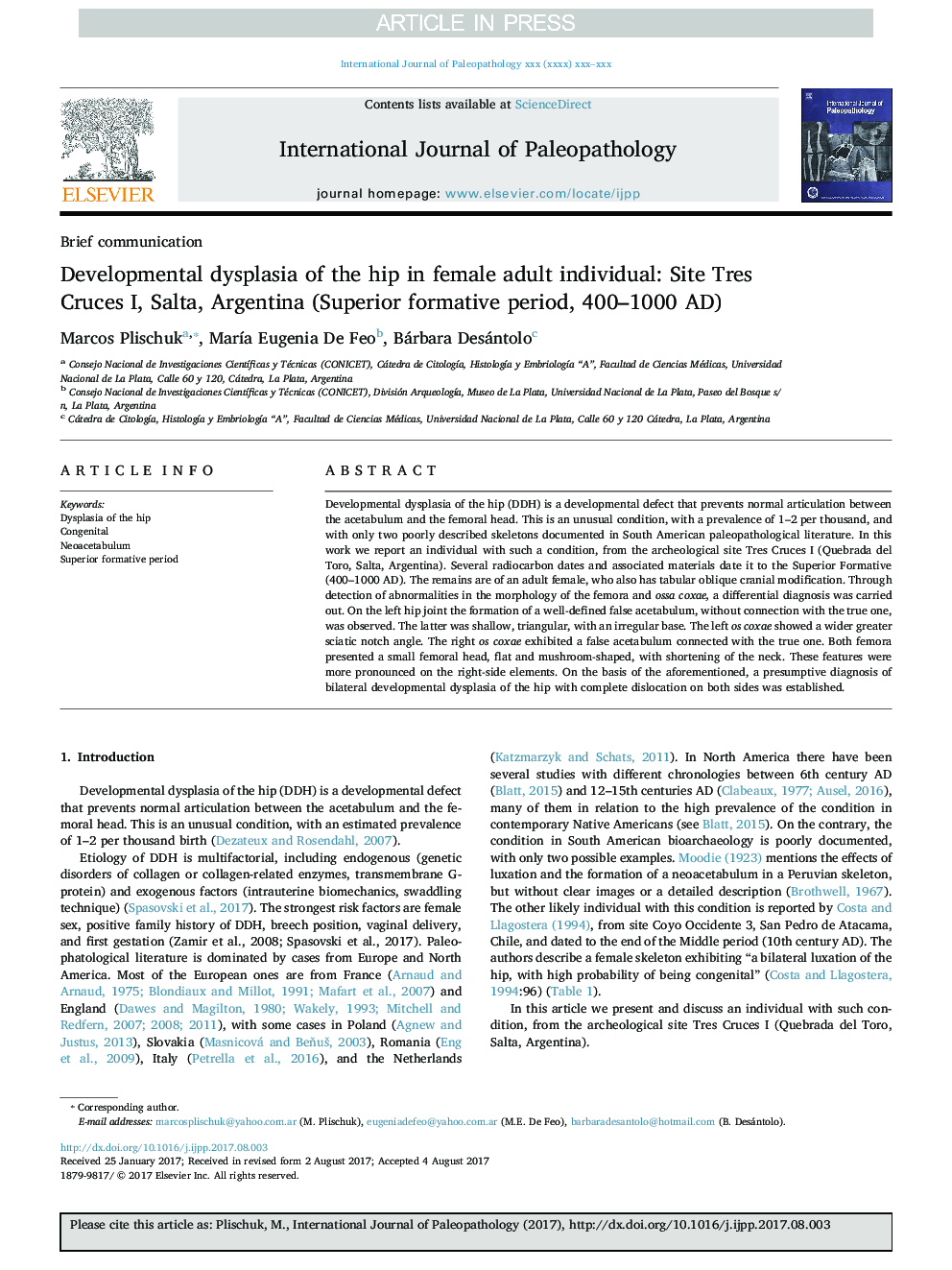| Article ID | Journal | Published Year | Pages | File Type |
|---|---|---|---|---|
| 6554796 | International Journal of Paleopathology | 2018 | 6 Pages |
Abstract
Developmental dysplasia of the hip (DDH) is a developmental defect that prevents normal articulation between the acetabulum and the femoral head. This is an unusual condition, with a prevalence of 1-2 per thousand, and with only two poorly described skeletons documented in South American paleopathological literature. In this work we report an individual with such a condition, from the archeological site Tres Cruces I (Quebrada del Toro, Salta, Argentina). Several radiocarbon dates and associated materials date it to the Superior Formative (400-1000 AD). The remains are of an adult female, who also has tabular oblique cranial modification. Through detection of abnormalities in the morphology of the femora and ossa coxae, a differential diagnosis was carried out. On the left hip joint the formation of a well-defined false acetabulum, without connection with the true one, was observed. The latter was shallow, triangular, with an irregular base. The left os coxae showed a wider greater sciatic notch angle. The right os coxae exhibited a false acetabulum connected with the true one. Both femora presented a small femoral head, flat and mushroom-shaped, with shortening of the neck. These features were more pronounced on the right-side elements. On the basis of the aforementioned, a presumptive diagnosis of bilateral developmental dysplasia of the hip with complete dislocation on both sides was established.
Keywords
Related Topics
Life Sciences
Biochemistry, Genetics and Molecular Biology
Physiology
Authors
Marcos Plischuk, MarÃa Eugenia De Feo, Bárbara Desántolo,
